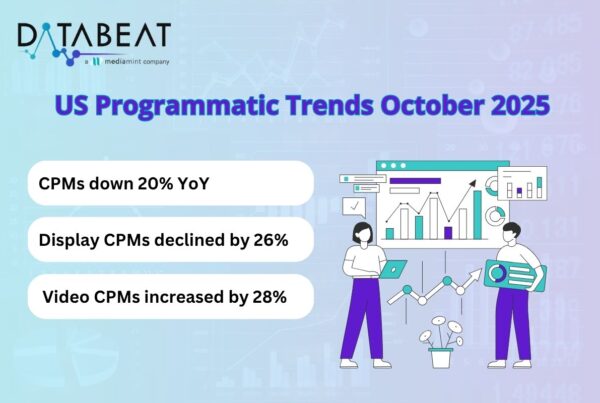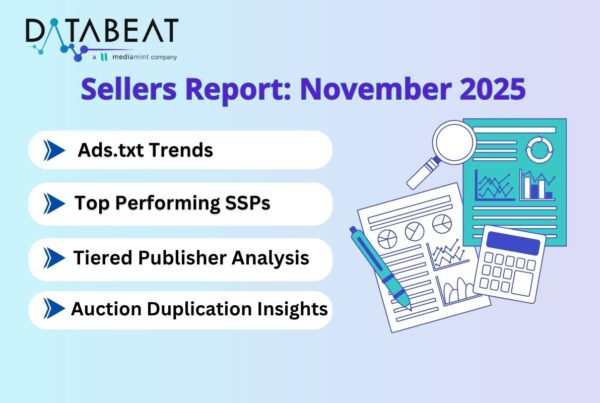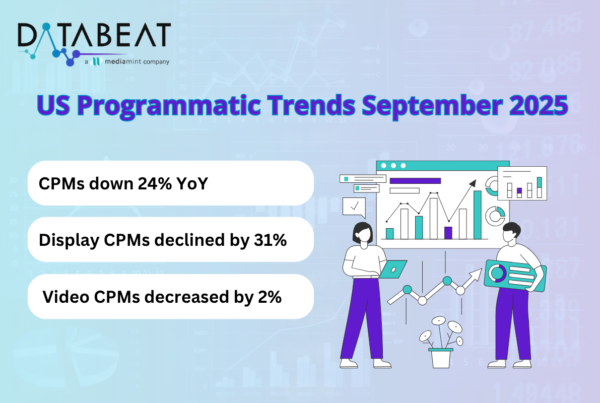
Date & Time – 29th May 2025, 12PM EST (Thursday)
At our latest DataBeat AdTech Roundtable, industry leaders unpacked critical issues in programmatic, including MFA detection, bid duplication, and SPO strategies. Here are the top takeaways shaping the evolving landscape of AdTech monetization.
1. How can MFA (Made-for-Advertising) sites be effectively identified in today’s programmatic ecosystem?
MFA sites continue to pose significant challenges for advertisers and platforms alike. Experts in the roundtable pointed to several identifiers that can flag such sites, including high ads-to-content ratios, heavy use of evergreen or recycled content, signs of arbitrage, and the use of clickbait headlines that lead to accidental clicks and artificially inflated click-through rates (CTR). Another key indicator discussed was user saturation, wherein too many impressions are served to the same user in a short span. From the supply side, signs like mismatches in ads.txt files and unusual patterns in impression refresh rates can also serve as red flags. The consensus was that identifying MFA sites requires a combination of metric-based signals and contextual understanding.
2. Who should be responsible for managing duplicate bid requests – publishers or SSPs?
Managing duplicate bid requests is a shared responsibility between publishers and SSPs. Publishers should avoid integrating the same partner through multiple paths, limit the number of intermediaries, and refrain from flooding the ecosystem with excessive bid requests. Such practices lead to redundancy and inefficiency. On the other hand, SSPs should implement throttling mechanisms to control bid volume and discourage publishers from maintaining bloated ads.txt files, which can trigger overlapping auction calls. Reducing bid duplication requires collaboration, cleaner supply paths, and more disciplined integration practices on both sides.
3. Are all ad units on a website profitable? If not, what is the impact?
Not necessarily. While it’s common to assume that every ad unit contributes to revenue, some may actually end up being unprofitable. This can happen when the revenue generated from an ad unit doesn’t cover associated costs like ad server fees. During the discussion, a case study was shared highlighting that certain units failed to reach even the breakeven point. The impact of running such units is twofold: they dilute overall profitability and consume valuable page real estate that could be allocated to higher-performing placements. Regular inventory audits are essential to identify and phase out underperforming units.
4. How relevant are SPO (Supply Path Optimization) and ads.txt to improving ad performance?
While some question whether SPO and ads.txt truly impact DSP decision-making, others shared evidence of tangible benefits. For instance, strategic updates to the ads.txt file, adding only relevant, high-quality SSP lines, led to a notable revenue increase. While DSPs may generally trust their SSP partners, they are increasingly cautious with arbitrage-heavy paths. Thus, a well-maintained ads.txt file and focused SPO strategy can help improve trust, streamline supply paths, and ultimately drive better yield for publishers.
5. How do curation and PMP strategies differ, and what role do they play in monetization?
Curation and Private Marketplace (PMP) strategies both aim to improve inventory quality and monetization, but they serve different purposes. Curation involves pre-selecting high-quality, contextually relevant inventory often tailored for specific buyers. It helps streamline supply paths and enhance targeting. On the other hand, PMP strategies revolve around direct deals between publishers and buyers, offering more control and potentially higher CPMs. In the discussion, it was noted that curation can deliver value especially for large publishers while smaller publishers may find more success through targeted PMP deals that cater to niche audience segments. Choosing the right approach depends on the publisher’s scale, inventory quality, and business goals.
6. Can dynamic take rates by SSPs improve fill rates and overall performance?
Dynamic take rates, where SSPs adjust their revenue share based on inventory performance, were proposed as a smarter alternative to static models. The idea is to incentivize monetization of lower-performing inventory by reducing SSP fees, thereby making it more attractive to buyers. While many SSPs still rely on fixed rates, some are starting to explore dynamic options. If widely adopted, this model could align incentives across the supply chain, helping publishers boost fill rates without sacrificing profitability.
Final Thoughts:
This roundtable shed light on the nuanced challenges shaping today’s programmatic landscape. From identifying MFA sites to optimizing ad inventory and exploring dynamic SSP models, the conversation emphasized the need for smarter, more collaborative strategies to drive sustainable monetization.









